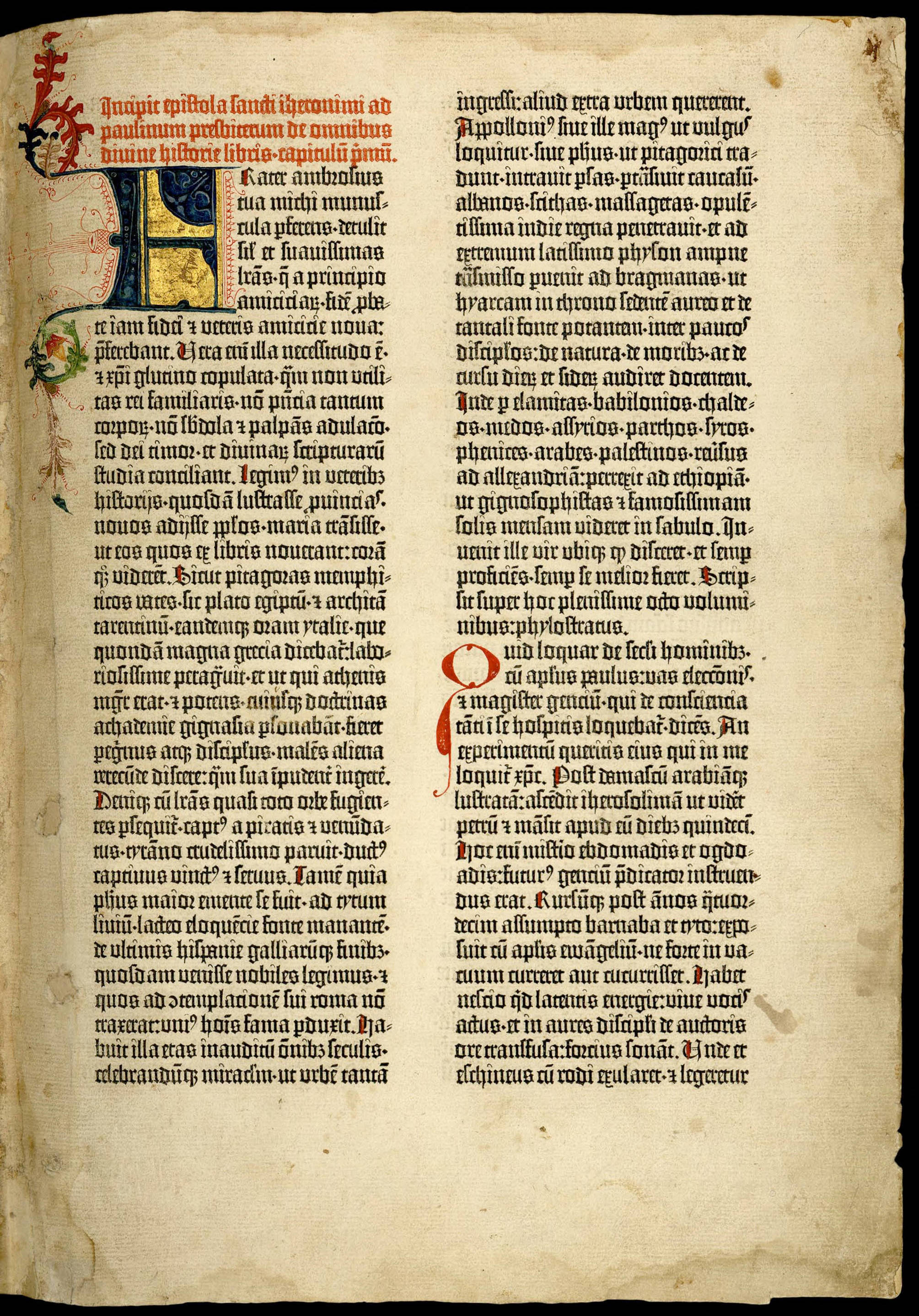|
ISO 8601
ISO 8601 is an international standard covering the worldwide exchange and communication of date and time-related data. It is maintained by the International Organization for Standardization (ISO) and was first published in 1988, with updates in 1991, 2000, 2004, and 2019, and an amendment in 2022. The standard provides a well-defined, unambiguous method of representing calendar dates and times in worldwide communications, especially to avoid misinterpreting numeric dates and times when such data is transferred between countries with different conventions for writing numeric dates and times. ISO 8601 applies to these representations and formats: ''dates'', in the Gregorian calendar (including the proleptic Gregorian calendar); ''times'', based on the 24-hour timekeeping system, with optional UTC offset; '' time intervals''; and combinations thereof.ISO 8601:2004 section 1 Scope The standard does not assign specific meaning to any element of the dates/times represented: t ... [...More Info...] [...Related Items...] OR: [Wikipedia] [Google] [Baidu] |
ISO 2014
ISO 2014 is an international standard that was issued in April 1976, and superseded by ISO 8601 in June 1988. ISO 2014 was the standard that originally introduced the all-numeric date notation [YYYY]-[MM]-[DD] with the digits in order starting with the most significant digit first (similar to big-endian). It was technically identical to ISO Recommendation R 2014 from 1971. References ISO standards, #02014 {{measurement-stub ... [...More Info...] [...Related Items...] OR: [Wikipedia] [Google] [Baidu] |
ISO Week Date
The ISO week date system is effectively a leap week calendar system that is part of the ISO 8601 date and time standard issued by the International Organization for Standardization (ISO) since 1988 (last revised in 2019) and, before that, it was defined in ISO (R) 2015 since 1971. It is used (mainly) in government and business for fiscal years, as well as in timekeeping. This was previously known as "Industrial date coding". The system specifies a ''week year'' atop the Gregorian calendar by defining a notation for ordinal weeks of the year. The Gregorian leap cycle, which has 97 leap days spread across 400 years, contains a whole number of weeks (). In every cycle there are 71 years with an additional 53rd week (corresponding to the Gregorian years that contain 53 Thursdays). An average year is exactly 52.1775 weeks long; months ( year) average at exactly 4.348125 weeks/month. An ISO week-numbering year (also called ''ISO year'' informally) has 52 or 53 full weeks. That is 3 ... [...More Info...] [...Related Items...] OR: [Wikipedia] [Google] [Baidu] |
ISO 2711
ISO 2711 is an ISO standard describing formats for ordinal dates. The ISO is an international standard-setting body composed of representatives from various national standards organizations. ISO 2711 was issued in 1973, and was superseded by ISO 8601 ISO 8601 is an international standard covering the worldwide exchange and communication of date and time-related data. It is maintained by the International Organization for Standardization (ISO) and was first published in 1988, with updates in ... in June 1988. References #02711 {{measurement-stub ... [...More Info...] [...Related Items...] OR: [Wikipedia] [Google] [Baidu] |
Colon (punctuation)
The colon, , is a punctuation mark consisting of two equally sized dots aligned vertically. A colon often precedes an explanation, a list, or a quoted sentence. It is also used between hours and minutes in time, between certain elements in medical journal citations, between chapter and verse in Bible citations, between two numbers in a ratio, and, in the US, for salutations in business letters and other formal letters. History In Ancient Greek, in rhetoric and prosody, the term (', 'limb, member of a body') did not refer to punctuation, but to a member or section of a complete thought or passage; see also '' Colon (rhetoric)''. From this usage, in palaeography, a colon is a clause or group of clauses written as a line in a manuscript.''Oxford English Dictionary'', 1st ed. "colon, ''n.2''" Oxford University Press (Oxford), 1891. In the 3rd century BC, Aristophanes of Byzantium is alleged to have devised a punctuation system, in which the end of such a was thought to oc ... [...More Info...] [...Related Items...] OR: [Wikipedia] [Google] [Baidu] |
Hyphen
The hyphen is a punctuation mark used to join words and to separate syllables of a single word. The use of hyphens is called hyphenation. The hyphen is sometimes confused with dashes (en dash , em dash and others), which are wider, or with the minus sign , which is also wider and usually drawn a little higher to match the crossbar in the plus sign . As an Orthography, orthographic concept, the hyphen is a single entity. In character encoding for use with computers, it is represented in Unicode by any of several character (computing), characters. These include the dual-use hyphen-minus, the soft hyphen, the #Nonbreaking hyphens, nonbreaking hyphen, and an unambiguous form known familiarly as the "Unicode hyphen", shown at the top of the infobox on this page. The character most often used to represent a hyphen (and the one produced by the key on a keyboard) is called the "hyphen-minus" by Unicode, deriving from the original ASCII standard, where it was called "hyphen(minus)". ... [...More Info...] [...Related Items...] OR: [Wikipedia] [Google] [Baidu] |
Plain Text
In computing, plain text is a loose term for data (e.g. file contents) that represent only characters of readable material but not its graphical representation nor other objects ( floating-point numbers, images, etc.). It may also include a limited number of "whitespace" characters that affect simple arrangement of text, such as spaces, line breaks, or tabulation characters. Plain text is different from formatted text, where style information is included; from structured text, where structural parts of the document such as paragraphs, sections, and the like are identified; and from binary files in which some portions must be interpreted as binary objects (encoded integers, real numbers, images, etc.). The term is sometimes used quite loosely, to mean files that contain ''only'' "readable" content (or just files with nothing that the speaker does not prefer). For example, that could exclude any indication of fonts or layout (such as markup, markdown, or even tabs); characters s ... [...More Info...] [...Related Items...] OR: [Wikipedia] [Google] [Baidu] |
Leading Zero
A leading zero is any 0 digit that comes before the first nonzero digit in a number string in positional notation.. For example, James Bond's famous identifier, 007, has two leading zeros. Any zeros appearing to the left of the first non-zero digit ''before'' the decimal point do not affect its value, and can be omitted (or replaced with blanks) with no loss of information. Therefore, the usual decimal notation of integers does not use leading zeros except for the zero in the ones place, which would be denoted as an empty string otherwise. However, for digits ''after'' the decimal point, the leading zeros between the decimal point and the first nonzero digit are necessary for conveying the magnitude of a number and cannot be omitted (ex. 0.001), while trailing zeros – zeros occurring after the decimal point and after the last nonzero digit – can be omitted without changing the meaning (ex. 0.00100). Occurrence Often, leading zeros are found on non-electronic digital displ ... [...More Info...] [...Related Items...] OR: [Wikipedia] [Google] [Baidu] |
Sorting
Sorting refers to ordering data in an increasing or decreasing manner according to some linear relationship among the data items. # ordering: arranging items in a sequence ordered by some criterion; # categorizing: grouping items with similar properties. Ordering items is the combination of categorizing them based on equivalent order, and ordering the categories themselves. By type Information or data In , arranging in an ordered sequence is called "sorting". Sorting is a common operation in many applications, and efficient algorithms have been developed to perform it. The most common uses of sorted sequences are: * making lookup or search efficient; * making merging of sequences efficient; * enabling processing of data in a defined order. The opposite of sorting, rearranging a sequence of items in a random or meaningless order, is called shuffling. For sorting, either a weak order, "should not come after", can be specified, or a strict weak order, "should come before" ... [...More Info...] [...Related Items...] OR: [Wikipedia] [Google] [Baidu] |
Lexicographical Order
In mathematics, the lexicographic or lexicographical order (also known as lexical order, or dictionary order) is a generalization of the alphabetical order of the dictionaries to sequences of ordered symbols or, more generally, of elements of a totally ordered set. There are several variants and generalizations of the lexicographical ordering. One variant applies to sequences of different lengths by comparing the lengths of the sequences before considering their elements. Another variant, widely used in combinatorics, orders subsets of a given finite set by assigning a total order to the finite set, and converting subsets into increasing sequences, to which the lexicographical order is applied. A generalization defines an order on an ''n''-ary Cartesian product of partially ordered sets; this order is a total order if and only if all factors of the Cartesian product are totally ordered. Definition The words in a lexicon (the set of words used in some language) have a ... [...More Info...] [...Related Items...] OR: [Wikipedia] [Google] [Baidu] |
The Library Of Congress
The Library of Congress (LOC) is a research library in Washington, D.C., serving as the library and research service for the United States Congress and the ''de facto'' national library of the United States. It also administers Copyright law of the United States, copyright law through the United States Copyright Office, and it houses the Congressional Research Service. Founded in 1800, the Library of Congress is the oldest Cultural policy of the United States, federal cultural institution in the United States. It is housed in three buildings on Capitol Hill, adjacent to the United States Capitol, along with the National Audio-Visual Conservation Center in Culpeper, Virginia, and additional storage facilities at Fort Meade, Fort George G. Meade and Cabin Branch in Hyattsville, Maryland. The library's functions are overseen by the librarian of Congress, and its buildings are maintained by the architect of the Capitol. The LOC is one of the List of largest libraries, largest libra ... [...More Info...] [...Related Items...] OR: [Wikipedia] [Google] [Baidu] |
EDTF
EDTF may refer to: * e-Learning Developers’ Task Force, predecessor of E-Learning Developers' Community of Practice (ELCoP) * EVA Development Flight Tests (EDTF-5), of STS-80 * Exam Development Task Forces, of the American Registry for Diagnostic Medical Sonography * Extended Date Time Format, a type of extended date formats added to ISO 8601 in 2019 * Freiburg Airport, Baden-Württemberg, Germany {{disamb ... [...More Info...] [...Related Items...] OR: [Wikipedia] [Google] [Baidu] |
Library Of Congress
The Library of Congress (LOC) is a research library in Washington, D.C., serving as the library and research service for the United States Congress and the ''de facto'' national library of the United States. It also administers Copyright law of the United States, copyright law through the United States Copyright Office, and it houses the Congressional Research Service. Founded in 1800, the Library of Congress is the oldest Cultural policy of the United States, federal cultural institution in the United States. It is housed in three buildings on Capitol Hill, adjacent to the United States Capitol, along with the National Audio-Visual Conservation Center in Culpeper, Virginia, and additional storage facilities at Fort Meade, Fort George G. Meade and Cabin Branch in Hyattsville, Maryland. The library's functions are overseen by the librarian of Congress, and its buildings are maintained by the architect of the Capitol. The LOC is one of the List of largest libraries, largest libra ... [...More Info...] [...Related Items...] OR: [Wikipedia] [Google] [Baidu] |




